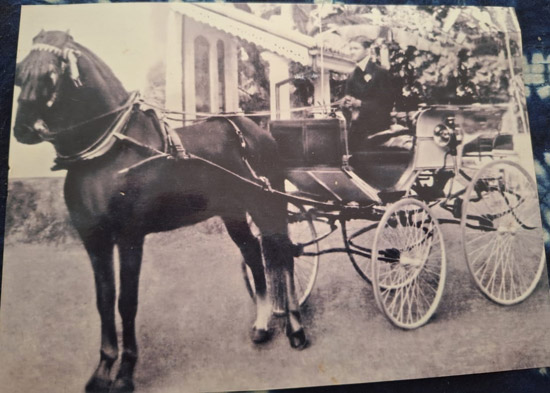The pardon of Henry Pedris brings back memories of a plucky officer
A sight one takes for granted in busy Havelock Town is the statue of a youthful horseman near the tranquil temple of Isipathanaramaya.
With the posthumous pardon granted to him by former President Ranil Wickremesinghe on September 12, the national hero Diyunuge Edward Henry Pedris stands acquitted of the ‘traitorous’ crimes he was wrongly accused of 109 years ago.
The recent Presidential pardon for Henry Pedris comes after requests from members of the family. Retired Supreme Court Justice Anil Gooneratne whose grandfather and Henry Pedris were cousins, is happy that a wrong has been righted and hopes the same would be done ‘for others who suffered due to martial law’. Justice Gooneratne was initially requested to head the committee to look into the pardon, but refused due to his family ties.

Edward Henry Pedris: The young captain of the Colombo Town Guard
The story of Henry Pedris is one of high tragedy and public horror. The execution of this conscientious captain and amiable young man about town on July 7,1915 and the showing of his blood-spattered chair by the British rulers as a warning to other Sinhala patriots, was a grim reminder of the excesses of colonial rule.
This unjust execution spurred Sri Lankan patriots to strive harder for independence – and goes to show that Sri Lanka did not win a ‘bloodless’ freedom on a platter after all.
While for Sri Lankans today, the Pedris story may seem all in the distant past, there are some who still hold dear, tales of a man who met death unflinchingly (according to eyewitnesses), refusing to use the kerchief handed to him and tying his own, calmly, over his eyes.
Among Henry Pedris’s descendants are Ranjit and Gamini Pedris living down Ward Place, (two cousins who are grandnephews of Henry Pedris), Chandani Mathews from Borella (whose great grandfather was D. C. Pedris, uncle to Edward), Anura Bastian from Kinross Avenue, Bambalapitiya (whose mother and Henry Pedris were first cousins) and Bernard Kumaradasa Ranasinghe from ‘Cranford’ down Alfred Place, Kollupitiya (great-nephew to Henry) who still keep his memory alive.
A Thomian as well as a Royalist, Henry was known to be a plucky officer. There is the tale of the narrow Wellawatte wooden bridge, where he is said to have refused point blank to back his horse to make way for a high British official’s car. He also refused to give up a seat in a cinema (even one reserved for Europeans) to a British officer.
Henry was known to have been a keen equestrian and once owned a horse called Lali, bought from a Russian grand duke. The brown purebred was sent over the Easter holidays to Nuwara Eliya. Bernard Ranasinghe says Henry would visit Cranford in his grandmother’s day, riding on Lali.
A year prior to his death, at 26, Henry was engaged to marry Hilda Fernando-Wijesekere, 21. At this time, he was living in Vimal Villa in today’s Dharmapala Mawatha. It is said D. D. Pedris, his father, was quite upset when Henry refused to steer the father’s empire, preferring instead to join the Colombo Town Guard as a private.
It was in 1915, that the Sinhala-Muslim riots broke out. ‘Eddie’, as he was known was said to have been instrumental in turning back the hostile crowds swelling towards Colombo at the Victoria Bridge. The British police officers and those Sinhalese envious of this youth, however cooked up the story that he “instigated the crowds to march to the city”. Other rumours were floated around that he was found firing at the Muslim mob when the attack on the Crystal Palace at Keyzer Street happened.
His last days, spent in the Welikada prison where he was held along with other illustrious freedom fighters including Sir D.B. Jayatilaka, F.R. Senanayake, D.S. Senanayake, D.C. Senanayake, and Dr. C. A. Hewavitarne) has been documented by A.E. Goonesinha, the “Father of the Labour movement”.
In the L Ward of the jail reserved for the most notorious, none of them, says Goonesinha, could touch the plates of buth curry given. Luckily food from home was allowed. A few days later Henry was removed to a different cell as he was to be court martialled.
Says Goonesinha of the final minutes, “with courage and fortitude he put on his uniform, bereft of the (decorations) due to the rank of Major. At about 6 a.m. we saw him being marched out, and it was remarkable to see him keeping step with the soldiers who escorted him”…
Himaddrini Ranasinghe, daughter of Bernard, says the story was that till the last minute D. D. Pedris would have given gold, equivalent to the weight of Henry for a pardon for his only son.
D. D. Pedris, after the execution of Henry, directed himself to various pious undertakings to give merit to his son. The Isipathanaramaya temple was completed in 1919, with paintings by that doyen of temple artists M. Sarlis. Initially known as the ‘Pedris temple’, it has the tallest stupa in the Western Province. A pilgrims’ rest in Polonnaruwa was also built in his name and Henry’s mother Mrs. Mallino Pedris, also donated land for the Mallikarama temple in Dematagoda in 1920 in his memory.
Henry’s body was buried secretly during a curfew, and the location of his grave was not known until a certain plot in Kanatte bought by D. D. Pedris in 1912 was dug up and an oak coffin was retrieved.
The family of Henry Pedris today bemoans that the memorial for the hero in Kanatte is in a sad state of disrepair, and hope attention would be paid to this, his last resting place.
Searching for an ideal partner? Find your soul mate on Hitad.lk, Sri Lanka's favourite marriage proposals page. With Hitad.lk matrimonial advertisements you have access to thousands of ads from potential suitors who are looking for someone just like you.


